What's New
Displaying results 3951 - 3960 of 4052
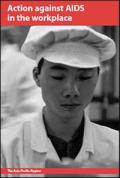
Resource | Publications,
The International Labour Organisation has developed a Code of Practice on HIV/AIDS and the world of work following widespread consultations with governments, employers and workers. This provides practical guidance for developing national and workplace policies and programmes to combat the spread of HIV and mitigate its impact.
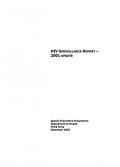
Resource | Publications,
In Hong Kong, the first cases of HIV infection and AIDS were diagnosed in 1984 and 1985 respectively. This paper outlines the epidemiological situation as revealed by the results of the surveillance programmes maintained by AIDS Unit, Department of Health.
The HIV/AIDS surveillance system comprises the following programmes: (a) HIV/AIDS reporting, (b) seroprevalence studies, (c) STD surveillance and (d) behavioural surveillance and other research activities. Surveillance activities are undertaken through the Research Office of the AIDS Unit.
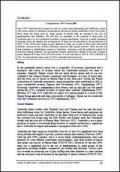
Resource | Publications,
Since 1997 Cambodia has increased its role as a major drug transmitting and trafficking country with recent reports of clandestine amphetamine laboratories being established on the Thai border. More drugs are being used by wider groups of people with an increase in the use of amphetamines and inhalants. We still have no estimates of the numbers of drug users in Cambodia and it is not considered a problem of great significance. However a public education campaign about the dangers and consequences of drug use was launched by the government in 2000. A few NGOs have begun to give attention to drug use as part of their work with street children, commercial sex workers, fishermen, prisoners and migrant workers.
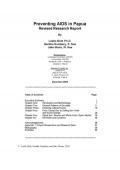
Resource | Publications,
This report summarizes the results of a study carried out with the indigenous population of Papua, Indonesia’s easternmost province. The study arose out of a concern with high rates of HIV infection in the province. While research has shown Papuans have a low level of awareness about HIV/AIDS, there have been no studies which situate knowledge of HIV risk and prevention in a broader context of cultural practice and experience. In 2002, the number of HIV/AIDS cases in the Papua reached 1,000; thus awareness and presentation of HIV transmission is of critical importance. About 90% of HIV cases were contracted by heterosexual encounters, with a further 5% by homosexual encounters. This report does not address HIV transmission via intravenous drug use or blood transfusion, or vertical transmission from mother to child.
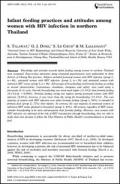
Resource | Publications,
Breastfeeding transmission is accountable for about one third of mother to child trans mission of HIV in developing countries (Mofenson 1997; Nicoll et al., 2000). In developed countries, women with HIV infection are recommended not to breastfeed their children; however, in developing countries, the risk of postnatal HIV transmission has to be balanced against the risk of morbidity and mortality associated with formula feeding.
While continuing to support the UNICEF Babyfriendly initiative and to promote universal breastfeeding, the Ministry of Public Health (MOPH) of Thailand has recommended formula feeding for infants born to mothers with HIV infection since 1993 and has provided free formula to the poorest fraction of the population.
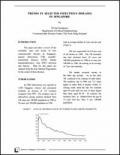
Resource | Publications,
This paper provides a review of the morbidity rates and trends of four communicable diseases in Singapore, namely tuberculosis (TB), sexually transmitted diseases (STD), human immonudeficiency virus (HIV) infection and leprosy. Data for this paper are obtained from the four National Programmes for the control of these diseases.
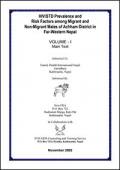
Resource | Publications,
This study was carried out to determine HIV/STIs prevalence rates among both migrants and non-migrants males from four VDCs around the Sanfebagar valley of Achham district in far-western Nepal. The objectives of this study were also to measure the extent of relationship between the prevalence rates and risk behavior and to ascertain the extent of linkage between migration and HIV/STI transmission in the area.
Data for this study was collected from a total of 610 males who were from 800 randomly selected households. From all respondents an oral informed consent was taken before conducting the individual interviews in a private setting. The pathological tests of the specimens were carried out in the central laboratories of SACTS Kathmandu and Auroprobe New Delhi.
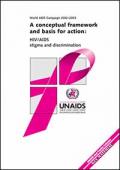
Resource | Publications,
Stigma and discrimination associated with HIV and AIDS are the greatest barriers to preventing further infections, providing adequate care, support and treatment and alleviating impact. HIV/AIDS-related stigma and discrimination are universal, occurring in every country and region of the world. They are triggered by many forces, including lack of understanding of the disease, myths about how HIV is transmitted, prejudice, lack of treatment, irresponsible media reporting on the epidemic, the fact that AIDS is incurable, social fears about sexuality, fears relating to illness and death, and fears about illicit drugs and injecting drug use.
HIV/AIDS-related stigma does not arise out of the blue, nor is it something dreamed up in the minds of individuals. Instead, like responses to diseases such as leprosy, cholera and polio in the past, it plays to deep-rooted social fears and anxieties. Understanding more about these issues, and the social norms they reinforce, is essential to adequately responding to HIV/AIDS-related stigma and discrimination. Otherwise, we run the risk of developing programmes and interventions that are not comprehensive, thus achieving little impact.
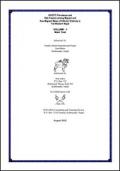
Resource | Publications,
This study was carried out to determine HIV/STI prevalence rates among both migrant and nonmigrant males from two VDCs of Kailali district in far-western Nepal. It was further set up to measure the extent of relationship between the rates and risk behaviors and to ascertain the extent of linkage between migration and HIV/STI transmission in the area.
Data for this study was collected from a total of 610 males who were from 800 randomly selected households. From all respondents oral informed consent was taken before conducting individual interviews in a private setting. The pathological tests of the specimens were carried out in the central laboratories of SACTS Kathmandu and Auroprobe New Delhi.
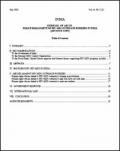
Resource | Publications,
The HIV/AIDS (human immunodeficiency virus/acquired immune deficiency syndrome) epidemic in
India is a rapidly escalating crisis. The government’s estimate that about 4 million persons in the country are HIV-positive is widely thought to understate the true figure. Throughout the country, persons in traditionally high-risk groups, including women in prostitution, injecting drug users, and men who have sex with men, have been shown to have alarmingly high rates of infection. In several states of India, such as Maharashtra and Tamil Nadu, the epidemic has spread to the general population. Programs that provide information, condoms and HIV testing to persons in high-risk groups are crucial to preventing the further spread of the disease.
This report demonstrates that such programs, so essential to the fight against HIV/AIDS in India, are undermined by police harassment and abuse of HIV/AIDS outreach workers, particularly those who provide essential information and services to women in prostitution and men who have sex with men. Human Rights Watch’s research on this subject, carried out in March and April 2002 in several states of India, indicates that these abuses are frequent and widespread. Police mistreatment of AIDS educators and outreach workers reflects underlying social stigmatization and discrimination faced regularly by women in prostitution and men who have sex with men.





